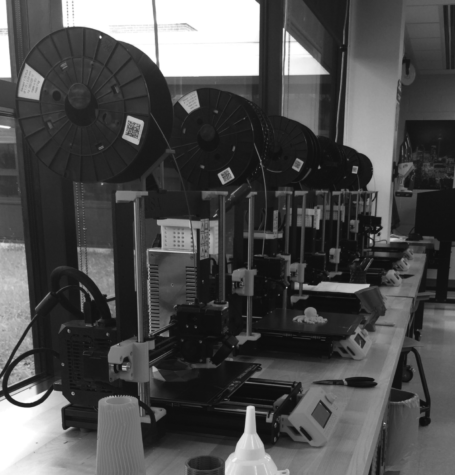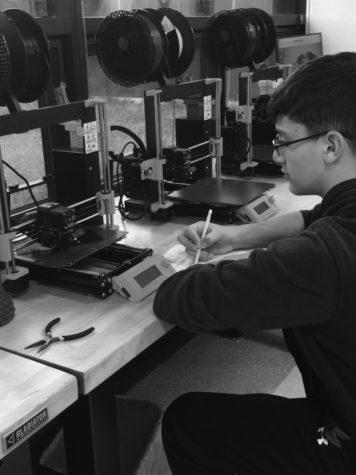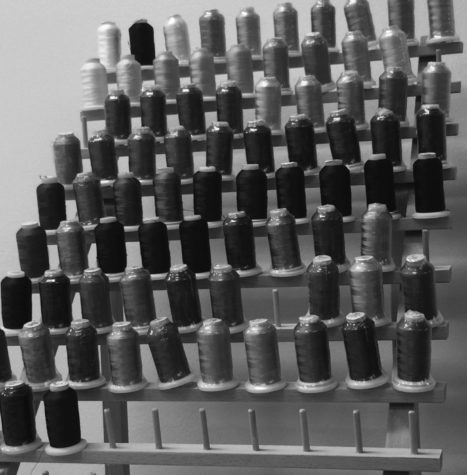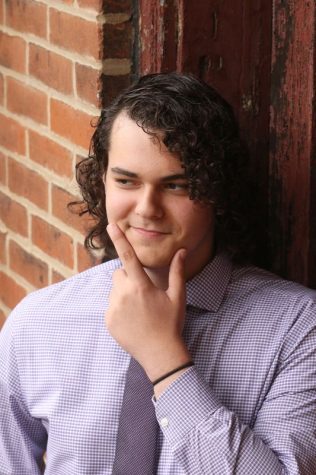New Maker Space InFUSEd with Interest-Driven Learning
October 31, 2019
Northwestern’s FUSE program is bringing a whole new theory for teaching and learning at DHS. It’s called “interest-driven learning,” where learning is more individual and the topics are chosen by the students. The new Maker Space, which is associated with FUSE, houses an environment conducive to FUSE’s interest-driven methods. The room for personal learning contains a host of 3D printers, various craft supplies, and is home to the FUSE program. Open for drop-ins 7:30 AM to 3:30 PM every day, students have a new opportunity to be creative.

Daniel Kim, the director of the Maker Space, explained why the Maker Space is important for education at DHS. Mr. Kim said, “Instead of receiving a passive look at education, they get to do something for themselves.” And as for the creativity itself, Kim believes, “that’s good for education as a whole.” Indeed, the creativity and personal learning in the Maker Space can help students in their classes as well. In fact, Kim believes the 3D printers could be more directly tied to academics. He encourages their use for class projects. “It would be nice if they used [the 3D printers] more directly for their education,” Kim said, “I’m fine with it just helping an individual student with their personal stuff, that’s fine, but I would like it if they were more integrated with courses and actually help people’s curriculum.” In the future, students could use the Maker Space for classwork.
Sometimes the Maker Space has activities that students are required to do. The FUSE challenges, for example, are an Advisory activity for freshmen students at DHS. The challenges can be entirely physical, entirely digital, or a hybrid of both. Each challenge can build in complexity, as they are split into ‘levels,’ getting harder as students complete each iteration. The FUSE program facilitates a way of learning by interest. Students can stop before they finish the whole activity, or choose new challenges. “There’s no strict curriculum here,” Kim explained, “Students are free to come in here and push for whatever project they’d like to.”
It’s unclear whether FUSE’s interest-driven learning will gain more footing at DHS. If it does, it may only be restricted to some classes or subjects. While it could definitely be useful in a curriculum, Kim emphasized, “It kind of depends on who the teachers are and what they’re teaching. Some subjects may lend a little bit more to interest-driven learning.” But if it were implemented, Kim forecasted that, “You’d see it in the curriculums, you’d see it every day in the classrooms, you’d see it in what the students are doing, in what the teachers are doing.” Kim reiterated the effect of the Maker Space and of FUSE, stating that, “Students who aren’t taking graphic arts, or one of the art classes, or engineering, you know, they might necessarily go through the entire year without being able to create like this.”
The way that this method of teaching and learning can be implemented is simply derived from the fact that it benefits all students. At Highland Park High School, FUSE methods and the engineering class are already integrated. They’ve been this way since 2012. The program is called Project Lead The Way, and its solid position at HPHS begs the question: Why is there nothing similar in Deerfield? Kim, though, is confident that any DHS equivalent of Project Lead The Way wouldn’t run through the Maker Space. “That is totally in the purview of Fine/Applied Arts.” Kim continued, “It’s going to be based off of the engineering teacher.” Kim believes that deeper integration of FUSE principles would bring major changes. He claimed that “it would essentially replace the curriculum of the engineering program we have now.” This is why Kim doesn’t believe that Project Lead The Way is coming to DHS. Kim recognizes, though, that however disruptive Project Lead The Way or the like could be to the DHS status quo, that there is a feeling among students that the change could happen. Kim recounted “I had a lot of students coming in here, and they were like ‘Oh, I wish this was a class. Oh, I wish the Maker Space was a class.’” In addition, Kim sees that Project Lead The Way is the closest possibility to a Maker Space class. So while Project Lead The Way may be, from an administrative standpoint, a significant change, it’s definitely a potential pathway for interest-driven learning to gain prominence at DHS.
For students that want a Maker Space class, the benefits of having one can already be seen in the way it’s being used now. Freshman Connor M. Vishnoi has used the Maker Space’s 3D printers and plans to do so again in the future. Vishnoi explained how the faculty and even other students in the Maker Space help users develop new skills. “I went in with some files that I 3D modeled the night before. I asked ‘Hey, can I 3D print something out?’ They walked me through slicing my prints, which is where you create a code that the printer uses, they helped me with that, and they made sure that my print would run successfully.” He was making earrings for homecoming and several cable holders. For most people, Vishnoi said that they only need to “Go into Thingiverse, which is a website with tons of 3D models, that you can just download easily, and print.” Vishnoi designs his own 3D models to print, though, and there’s a skill set that he had to learn in order to be successful. “I’m taking classes in 3DS Max and Myon,” he said, but those aren’t translatable to a 3D printer, “so I pretty much self-taught myself 360 Fusion.” Vishnoi’s experience is a prime example of how activities in the Maker Space can push students to learn things for themselves.

Vishnoi also foresees using the Maker Space for schoolwork, as he has done before. “I’ve had to do that in the past. In science during 7th grade, I 3D printed out some instruments,” he said. Vishnoi also plans to visit the Maker Space in the future for school supplies. He shared, “I’m 3D printing out a 6-in-1 later, I need to finish the model for that, ‘cause my 6-in-1 shattered so I was like ‘Hey, why don’t I just make one.’ It’s proven to be very challenging, as it’s small.” Vishnoi has to develop new skills in order to succeed, and these skills have everyday applications for him, in the case of the geometry instrument. Vishnoi also sees the benefit in the FUSE program for those with less background knowledge. He said that “For a lot of people that I know, it would probably be pretty helpful to have something like FUSE to build up basic skills.” So while the FUSE challenges may cover mostly introductory technical skills, they provide the foundation for more advanced physical or digital pursuits.
Mostly, the Maker Space is a space for DHS students to grow intellectually in the ways that suit them the best. Kim summed up the importance of the Maker Space, saying “There’s more of this student’s component to learning, and the Maker Space gives them a little more agency to their learning.” It’s open the whole school day for students to augment their education.


